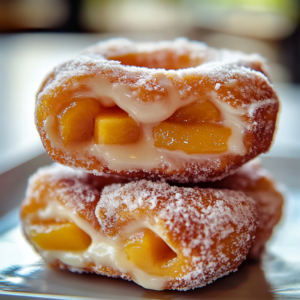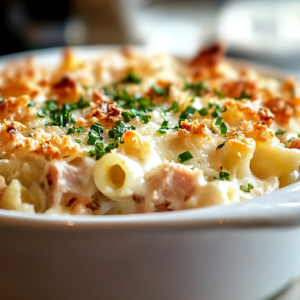Introduction and Quick Summary
Pain de Genes is a classic French dessert that captivates the palate with its moist texture and rich almond flavor. Originating from the beautiful region of Provence, this delightful cake is a true testament to the art of French pastry making. The name translates to “cake of Genoa,” reflecting its Italian influences and the use of ground almonds as a key ingredient. Whether enjoyed as a light afternoon treat or served at special occasions, Pain de Genes has earned its place in the hearts—and stomachs—of dessert enthusiasts around the world.

In this article, you’ll discover an authentic recipe that guides you step-by-step in creating your own Pain de Genes at home. We’ll explore the essential ingredients that bring this cake to life and provide detailed instructions on preparation techniques that ensure success every time you bake. With serving and storage tips included, you will be well-prepared to enjoy or share this exquisite dessert with family and friends.
Get ready to dive into the world of French baking! With our comprehensive guide on crafting the perfect Pain de Genes, you’ll impress everyone with your culinary prowess while indulging in one of France’s cherished treats.
Main Ingredients
Almond Flour
Almond flour is the star ingredient in Pain de Genes, providing both flavor and texture. Made from finely ground almonds, it lends a moist quality to the cake while infusing it with a delightful nutty taste. For this recipe, you will need 200 grams of almond flour. This ingredient not only enriches the flavor but also adds nutritional benefits such as healthy fats and proteins. Ensure you use high-quality almond flour for the best results; it should have a fine consistency without any lumps.
Eggs
Eggs play a crucial role in creating the structure and moisture of your Pain de Genes. You will need 4 large eggs at room temperature for this recipe. They help bind all ingredients together while adding richness to the cake’s flavor profile. Be sure to whisk them until they are pale and frothy before incorporating them into your batter; this ensures maximum aeration for a light texture.
Sugar
Sugar not only sweetens your cake but also contributes to its overall moisture content. For this recipe, use 150 grams of granulated sugar. As it dissolves during mixing and baking, sugar helps create a tender crumb by retaining moisture within the cake structure. Adjusting sugar levels can change sweetness; however, it is important to maintain balance for optimal flavor.
Butter
Butter brings richness and a decadent mouthfeel to your Pain de Genes. You will need 125 grams of unsalted butter for this recipe; ensure it is melted and cooled before adding it to your mixture. This fat component enhances both flavor and texture while promoting a tender crumb throughout the cake.
Vanilla Extract
Vanilla extract enhances all flavors within your Pain de Genes beautifully without overpowering them. For this recipe, 1 teaspoon of pure vanilla extract is sufficient. Whether using homemade or store-bought vanilla extract, be sure it’s high quality for the best taste outcome in your final product.
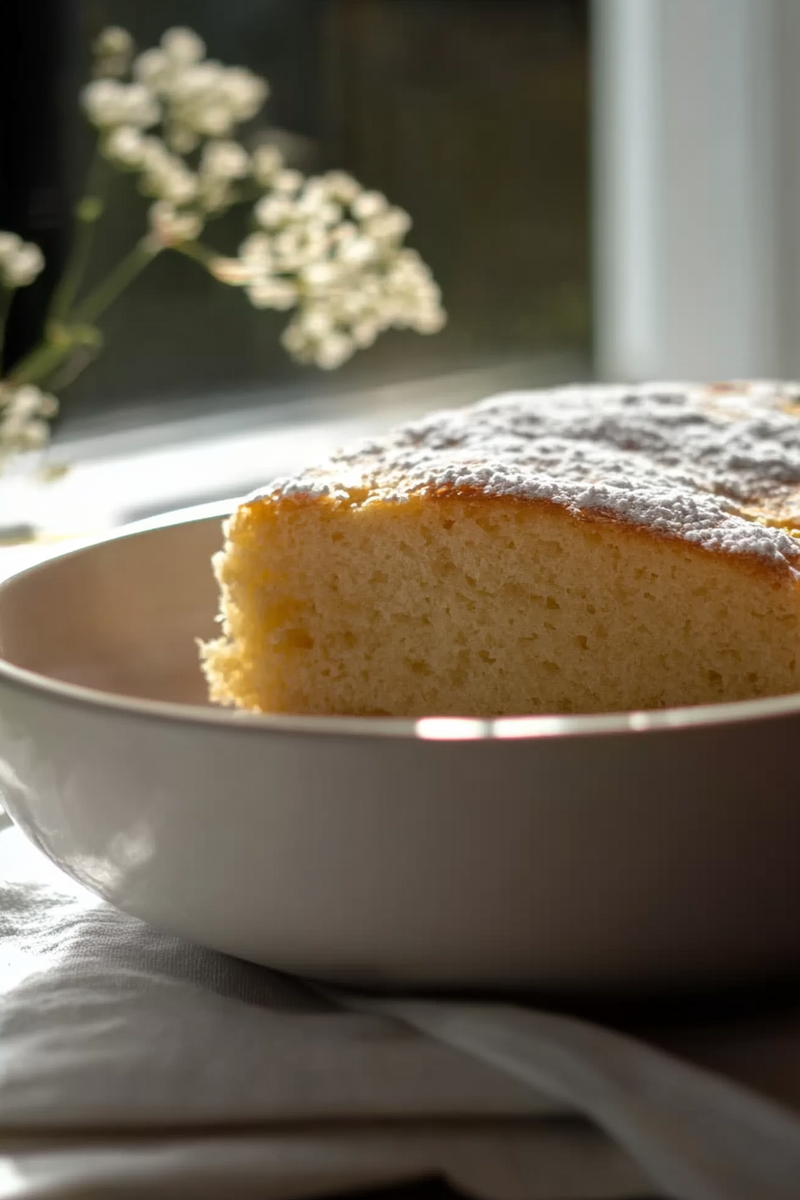
How to Prepare Pain de Genes
Step 1: Preheat Your Oven
Begin by preheating your oven to 175°C (350°F). Proper oven temperature is crucial for even baking; if not set correctly, your cake might rise unevenly or become dry on one side. Prepare an 8-inch round cake pan by greasing it lightly with butter or lining it with parchment paper. This will prevent sticking once baked and allow for easy removal from the pan after cooling.
Step 2: Whisk Eggs and Sugar
In a mixing bowl, combine your eggs and sugar together and whisk vigorously until they turn pale yellow and fluffy—this usually takes about five minutes using an electric mixer on medium speed or longer by hand. The goal here is to incorporate air into the mixture so that it becomes light enough that when folded into other ingredients later, it retains volume during baking.
Step 3: Incorporate Almond Flour
Once your egg-sugar mixture has reached desired fluffiness, gently fold in your almond flour using a spatula until fully combined without overmixing—this helps maintain airiness within the batter which leads to that sought-after moistness after baking! Make sure there are no visible clumps left behind; however do not rush through this process as delicate folding prevents deflating air bubbles created earlier.
Step 4: Add Butter and Vanilla
After ensuring uniformity in texture from folding in almond flour correctly last step; drizzle melted butter along edges while sprinkling vanilla extract evenly across top surface too—fold these additions carefully into mixture until just incorporated again avoiding vigorous stirring motions which could compromise fluffiness established so far!
Step 5: Bake Your Cake
Pour batter into prepared pan smoothing out top surface gently before placing it inside preheated oven! Bake for approximately 25-30 minutes keeping an eye on color change—the top should become golden brown while edges start pulling away slightly from sides indicating doneness! Perform toothpick test around 25-minute mark inserting into center checking if comes out clean indicating readiness!
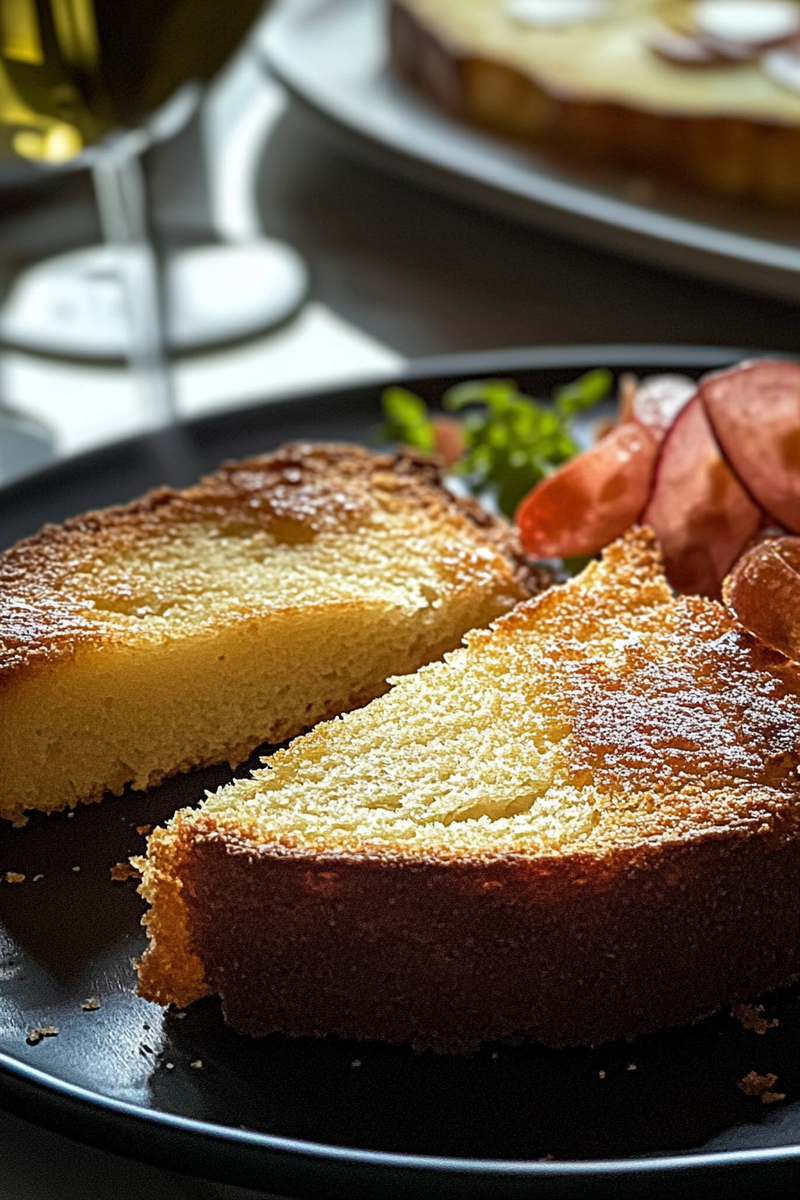
Serving and Storing Tips
Serving Suggestions
Once cooled completely after removing from oven; transfer Pain de Genes onto wire rack allowing further cooling before slicing into wedges! Serve plain or dress up slices with fresh berries whipped cream drizzled chocolate sauce enhancing presentation alongside flavors! Pairing well alongside coffee tea makes perfect accompaniment bringing out nuttiness within each bite enjoyed leisurely among friends family gatherings!
Storage Guidelines
To maintain freshness post-baking; wrap leftover slices tightly in plastic wrap store inside airtight container at room temperature up to three days maximum retaining original deliciousness longer than that can lead drying out quicker than intended! If desired freeze portions individually wrapped securely freezing up four months maintaining quality flavors intact ready whenever cravings strike again perfect solution preventing waste enjoying whenever mood strikes again without hassle needing bake anew each time!
Mistakes to avoid
When making Pain de Genes, avoiding common mistakes can greatly enhance your baking results. One frequent error is not measuring ingredients accurately. Use precise measurements for flour, sugar, and liquid components. A kitchen scale is invaluable here. Too much flour can lead to a dry texture, while insufficient sugar might hinder the cake’s rise.
Another mistake is neglecting to prepare your baking pan correctly. Always grease and line your pan with parchment paper to prevent sticking. This step ensures that your delightful Pain de Genes releases easily after baking. Forgetting this crucial detail can lead to a frustrating experience when you try to remove the cake.
Not preheating your oven is another oversight that affects the final product. An oven that isn’t hot enough can cause uneven baking, resulting in a dense cake instead of the desired lightness. Preheat your oven for at least 15 minutes before placing the cake inside.
Overmixing your batter is a common pitfall as well. While it may seem harmless, overmixing can develop gluten in the flour, leading to a chewy texture instead of the soft crumb you want in Pain de Genes. Mix just until combined for the best results.
Lastly, don’t skip letting your Pain de Genes cool completely before slicing. Cutting it too soon can ruin its structure and flavor. Allowing it to cool helps set the texture and enhances its overall taste.
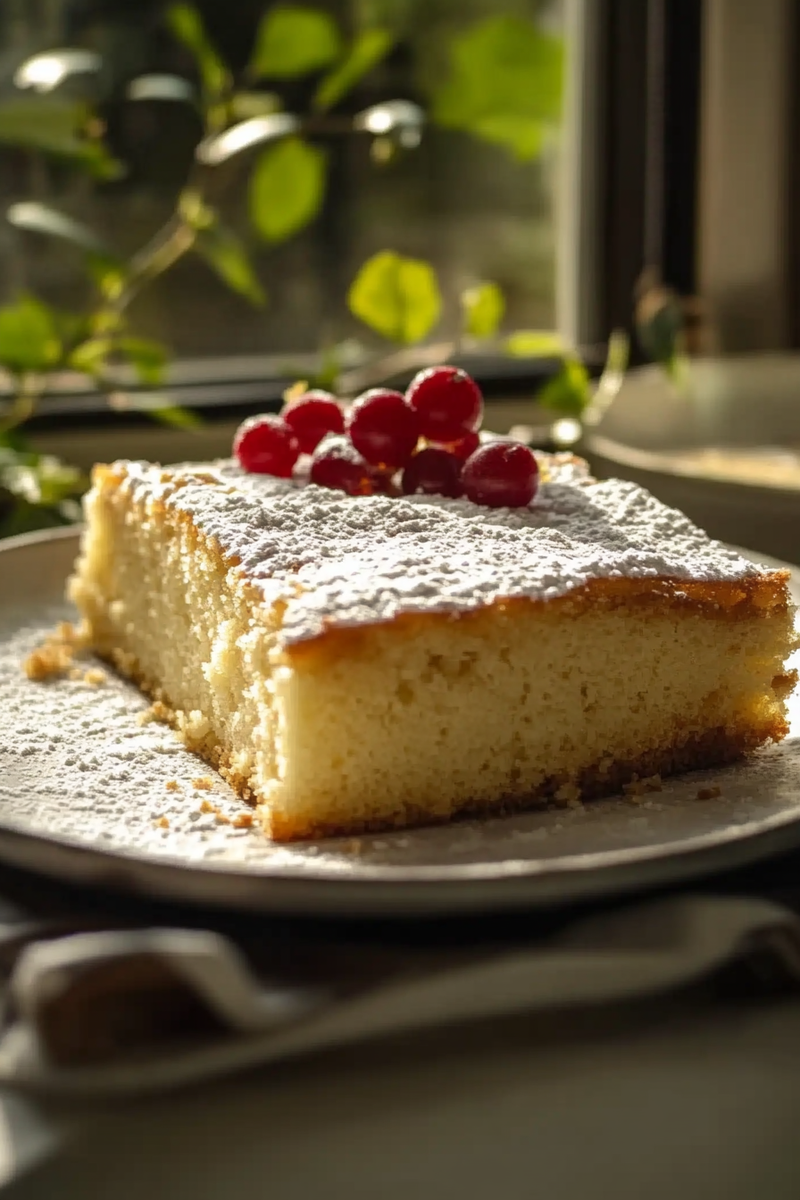
Tips and tricks
To achieve perfect Pain de Genes, consider some essential tips and tricks that elevate this classic dessert. First, choose high-quality ingredients. Fresh eggs, real butter, and premium vanilla extract make a significant difference in flavor and texture. Your cake will shine with quality ingredients, ensuring a delectable taste that resonates with traditional recipes.
Incorporate almond flour or ground almonds into your batter for an authentic touch. This addition not only enriches the flavor but also contributes to that beautiful moistness characteristic of Pain de Genes. Almonds add depth and complexity, making each bite memorable.
Use room temperature ingredients for better emulsification when mixing your batter. Cold eggs or butter can lead to a lumpy mixture that doesn’t blend well, affecting both taste and texture. Bring all refrigerated items to room temperature before starting your recipe for optimal results.
Another tip is to carefully monitor baking time and temperature. Every oven varies slightly; therefore, keep an eye on your cake as it bakes. Insert a toothpick into the center; if it comes out clean or with a few crumbs attached, it’s ready! Adjust times based on how your specific oven operates.
Lastly, consider serving Pain de Genes with complementary sides like whipped cream or fresh berries. These additions enhance flavor profiles while providing visual appeal on the plate.
Suggestions for Pain de Genes
Enhancing your Pain de Genes experience involves thoughtful suggestions tailored for maximum enjoyment. First, pair this delightful cake with flavored syrups or sauces such as chocolate ganache or raspberry coulis for an exquisite twist on presentation and taste. These additions complement the cake’s rich flavors beautifully while bringing vibrant colors to your dessert table.
Consider incorporating seasonal fruits into your serving suggestions as well. Slices of fresh strawberries or seasonal berries like blueberries will add freshness and brightness alongside each slice of Pain de Genes. They contrast nicely against its richness while keeping things light – perfect for summer gatherings!
Experiment by infusing flavors into your batter too! Try adding lemon zest or orange zest for citrus notes that elevate the overall taste profile of Pain de Genes without overpowering its essence. These subtle hints provide freshness and intrigue that guests will love discovering.
For those who enjoy experimentation in their baking journey, consider making mini versions of Pain de Genes using small tart pans or muffin tins! Individual servings offer unique presentation options while allowing guests to savor personal portions—ideal for parties or gatherings where sharing desserts is key.
Finally, don’t forget about storage! Keep leftover slices wrapped tightly in plastic wrap and stored in an airtight container at room temperature if consumed within two days; otherwise refrigerate them up to one week later—if they last that long!
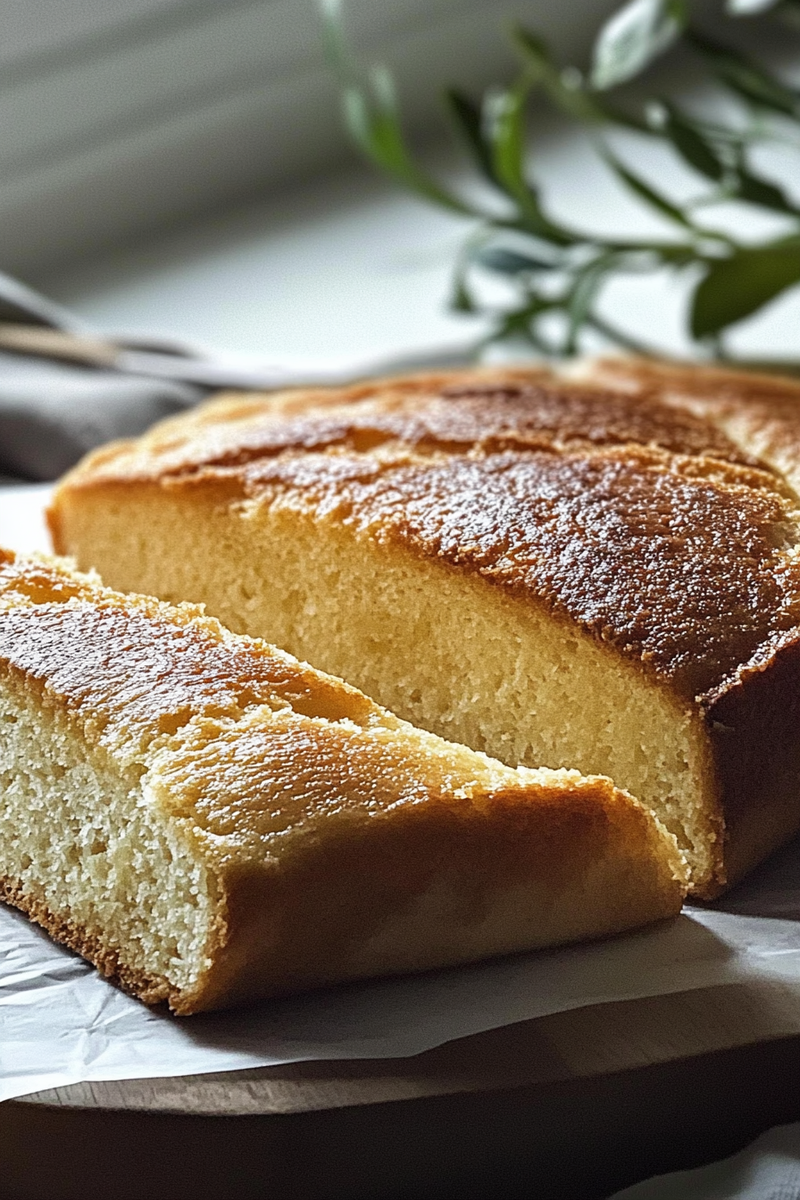
FAQs
What is Pain de Genes?
Pain de Genes is a traditional French almond cake known for its rich flavor and moist texture made primarily from ground almonds, eggs, sugar, and butter—often enjoyed as a dessert at celebratory events or tea time gatherings across France! This delightful treat has historical significance dating back centuries yet remains popular today due to its simple yet elegant preparation methods.
How do I ensure my Pain de Genes rises properly?
To guarantee proper rising in your Pain de Genes recipe: first ensure all ingredients are at room temperature before mixing; this helps create an even batter consistency which aids rising during baking time! Additionally incorporating air into egg whites through careful folding techniques fosters lift throughout cooking—ensuring lightness rather than density!
Can I substitute any ingredients when making Pain de Genes?
Yes! You can substitute certain ingredients based on dietary preferences—such as using gluten-free flour options (like almond flour) instead of regular wheat flour if necessary! Additionally feel free experimenting different nuts like hazelnuts instead almonds—while maintaining similar textures/flavors found within original recipes!
How should I store leftover Pain de Genes?
To store leftover slices effectively: wrap them tightly using plastic wrap then place them inside an airtight container—this keeps moisture locked-in preventing drying out over time! Enjoy stored cakes within 2-3 days at room temperature; alternatively refrigerate up-to one week without compromising taste/texture!
Is it possible to freeze Pain de Genes?
Absolutely! To freeze successfully: allow cakes cool completely then wrap securely using plastic wrap followed by aluminum foil before placing directly into freezer bags/containers—enabling preservation over longer periods without loss flavors/tenderness! Thaw overnight prior indulging again deliciousness once more!
What beverages pair well with Pain de Genes?
When choosing beverages complimenting deliciousness found within slices pain gene: consider pairing black tea (like Earl Grey) offering contrasting warmth alongside rich flavors; alternatively opt glass sweet dessert wine (such Sauternes) enhances creamy textures nicely—and elevates overall dining experience too!
Conclusion
In summary, creating the perfect Pain de Genes involves avoiding common mistakes such as inaccurate measurements and improper oven temperatures while embracing helpful tips focused on ingredient quality and technique refinement throughout preparation stages! Incorporating thoughtful suggestions also allows you enhance presentation through creative pairings alongside this classic treat—the result being impressive appearances sure impress guests during special occasions!
Remember always prioritize freshness when seeking out quality ingredients; this ultimately reflects not only upon flavor profiles but also textures achieved within final product itself too! With these insights guiding pathway toward success—you’ll find yourself crafting delightful slices each time you bake ensuring satisfaction every bite taken!

